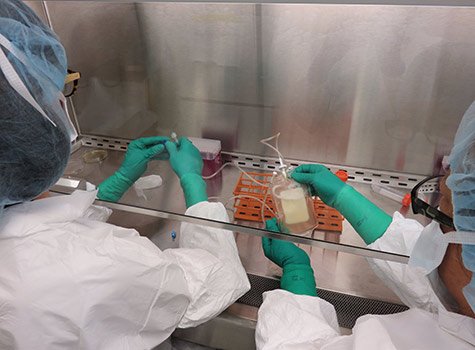Originally discovered in bacteria, the
In order to perturb genes in adult animals, key components of the
The Cas9 nuclease from the bacteria Staphylococcus aureus (SaCas9), presented in this new work, is 25% smaller than SpCas9, offering a solution to the AAV packaging problem.
The Broad/MIT team, led by Feng Zhang, core member of the Broad Institute and investigator at the McGovern Institute for Brain Research at MIT, along with collaborators at MIT, led by MIT Institute Professor Phillip Sharp, and the NCBI led by Eugene Koonin, set out to identify smaller Cas9 enzymes that could replicate the efficiency of the current SpCas9 system, while allowing packaging into delivery vehicles such as AAV. The researchers began by using comparative genomics to analyze Cas9s from more than 600 different types of bacteria, selecting six smaller enzymes for further study.
«Sifting through the 600 or so available Cas9 sequences, we identified a group of small variants in which the enzymatic domains were intact whereas the
After rigorous testing, only the Cas9 from S. aureus demonstrated DNA cutting efficiency comparable to that of SpCas9 in mammalian cells. The team then used a method known as BLESS, previously developed by Nicola Crosetto of the Karolinska Institute and Ivan Dikic at the Goethe University Medical School, to determine the presence of unintended
The team demonstrated the power of in vivo gene editing with AAV/
«While we have chosen a therapeutically relevant target, PCSK9, in this
More broadly, SaCas9 is expected improve scientists’ ability to screen for the effects of mutations and better understand gene function using animal models. In the future, it may also be engineered to allow the targeted control of gene expression, which can be employed to expand our understanding of transcriptional and epigenetic regulation in the cell.
The next step, says senior author Feng Zhang, is to compare and contrast the two Cas9s in the hope of recognizing ways to further optimize the system.
«This study highlights the power of using comparative genome analysis to expand the
About the engineered CRISPR-Cas9 system
CRISPRs (Clustered Regularly Interspaced Short Palindromic Repeats) have recently been harnessed as genome editing tools in a wide range of species. The engineered
About the Broad Institute of MIT and Harvard
The Eli and Edythe L. Broad Institute of MIT and Harvard was launched in 2004 to empower this generation of creative scientists to transform medicine. The Broad Institute seeks to describe all the molecular components of life and their connections; discover the molecular basis of major human diseases; develop effective new approaches to diagnostics and therapeutics; and disseminate discoveries, tools, methods and data openly to the entire scientific community.
Founded by MIT, Harvard and its affiliated hospitals, and the visionary Los Angeles philanthropists Eli and Edythe L. Broad, the Broad Institute includes faculty, professional staff and students from throughout the MIT and Harvard biomedical research communities and beyond, with collaborations spanning over a hundred private and public institutions in more than 40 countries worldwide. For further information about the Broad Institute, go to broadinstitute.org.
Paper(s) cited:
Paper cited: Ran, F. et al. In vivo genome editing using Staphylococcus aureus Cas9, Nature (2015). Doi: 10.1038/nature14299
http://www.broadinstitute.org
